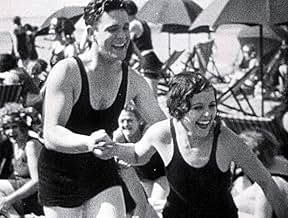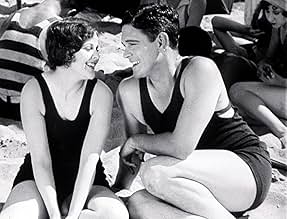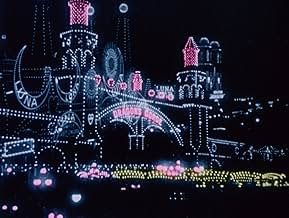IMDb RATING
7.7/10
2.8K
YOUR RATING
Two lonely people in the big city meet and enjoy the thrills of an amusement park, only to lose each other in the crowd after spending a great day together. Will they ever see each other aga... Read allTwo lonely people in the big city meet and enjoy the thrills of an amusement park, only to lose each other in the crowd after spending a great day together. Will they ever see each other again?Two lonely people in the big city meet and enjoy the thrills of an amusement park, only to lose each other in the crowd after spending a great day together. Will they ever see each other again?
- Awards
- 1 win total
Gusztáv Pártos
- Romantic Gentleman
- (as Gustav Partos)
Henry Armetta
- Ferris wheel guy
- (uncredited)
Edgar Dearing
- Cop
- (uncredited)
Louise Emmons
- Telephone Caller
- (uncredited)
Fred Esmelton
- Swami
- (uncredited)
Jack Raymond
- Barker
- (uncredited)
Churchill Ross
- Telephone Caller
- (uncredited)
Storyline
Did you know
- TriviaIt was one of the first motion pictures to have sound and a couple of talking scenes. It was released in both silent and monaural versions. Some scenes in existing original prints of the film are colored with stencils.
- Alternate versionsProduced in both sound and silent versions. The sound version was 6,785 feet in length, and the silent version was 6,193 feet.
- ConnectionsFeatured in Fejezetek a film történetéböl: Az amerikai film kezdetei (1989)
- SoundtracksAlways
(uncredited)
Written by Irving Berlin
[Played by dance orchestra at ballroom]
Sung by Nick Lucas
[on Brunswick recording played in last scene]
Featured review
... and I could say the same thing about Fejos' "Broadway", made a year later. Fejos recounts the tale of two lonely New Yorkers, Jim (Glen Tryon) and Mary (Barbara Kent), who find love and each other during a half day holiday at the beach and Coney Island. You first see the workday from Jim and Mary's perspective as they are ruled first by the tyranny of the alarm clock and then the tedium of the workday as you see a clock overlaying the image of each at work. Jim is a low-level machine operator, and Mary is a telephone operator. Then there are "the crowds". Jim and Mary are crowded at breakfast, at a diner filled with patrons, crowded on the subway, crowded at work, and crowded at the beach and amusement park. Yet both of them are completely alone in the world, which, especially in the attractive Miss Kent's case, seems somewhat inconceivable.
This late era silent has a dearth of title cards, which does not subtract from the film's enjoyment. In fact, what does subtract just a little are the short dialogue scenes that just don't make sense. One scene is Jim and Mary on the beach suddenly in the dark AND in color, with the crowd removed. Nothing they say shines any light on their situation or feelings at all. Another one is in a courtroom where Jim has been detained for being unruly. He gives a speech like a Bolshevik basically shaming the judge and ... the judge lets him go???? This social awareness seems very strange stuff coming from Jim who, up to that point, has seemed to be a very uncomplicated fellow. Very strange, but typical of talking scenes inserted into silent films at the dawn of sound.
What is extra special about this film is to see the lives of working class people in 1928. Notice that the workday that Jim and Mary are going through is a Saturday, and this was the norm back then and until some time after WWII. People would normally work half a day on Saturday and have only Sunday in its entirety as a day off. Catch this film if you can, even if you are not a huge silent film buff.
This late era silent has a dearth of title cards, which does not subtract from the film's enjoyment. In fact, what does subtract just a little are the short dialogue scenes that just don't make sense. One scene is Jim and Mary on the beach suddenly in the dark AND in color, with the crowd removed. Nothing they say shines any light on their situation or feelings at all. Another one is in a courtroom where Jim has been detained for being unruly. He gives a speech like a Bolshevik basically shaming the judge and ... the judge lets him go???? This social awareness seems very strange stuff coming from Jim who, up to that point, has seemed to be a very uncomplicated fellow. Very strange, but typical of talking scenes inserted into silent films at the dawn of sound.
What is extra special about this film is to see the lives of working class people in 1928. Notice that the workday that Jim and Mary are going through is a Saturday, and this was the norm back then and until some time after WWII. People would normally work half a day on Saturday and have only Sunday in its entirety as a day off. Catch this film if you can, even if you are not a huge silent film buff.
- How long is Lonesome?Powered by Alexa
Details
- Runtime1 hour 9 minutes
- Sound mix
- Aspect ratio
- 1.19:1
Contribute to this page
Suggest an edit or add missing content































